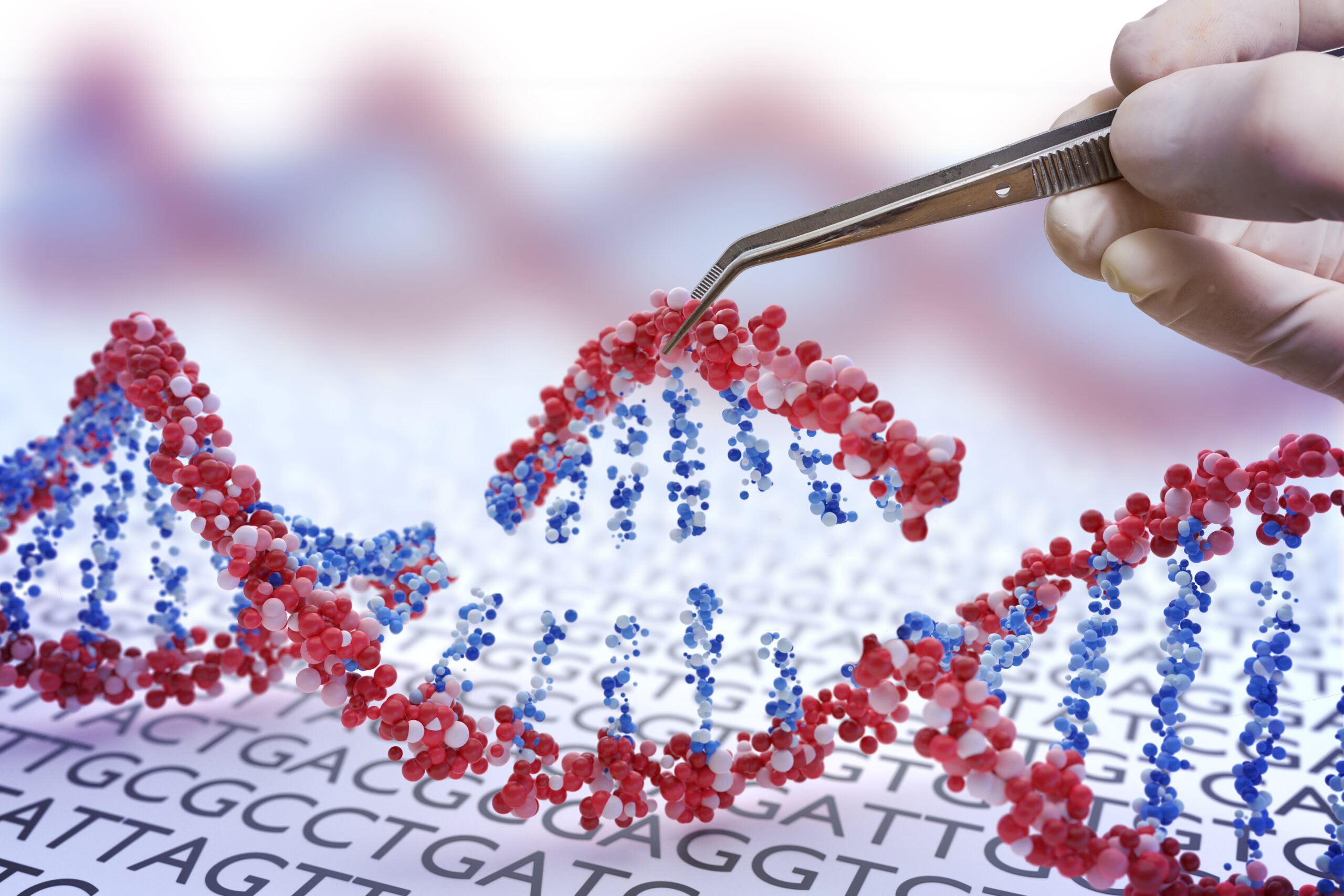
A first for CRISPR gene editing could have wider applications for human disease
A successful early trial of a drug for Familial Transthyretic Amyloidosis showed that CRISPR gene editing could be safely used in the human body. What does this mean for gene editing in HD?
A recent clinical trial successfully tested the safety of CRISPR gene editing to reduce the amount of a toxic protein in patients with Familial Transthyretic (TTR) Amyloidosis. Although this study is unrelated to Huntington’s disease, it’s a first for gene editing, and the results could have implications for HD and other brain disorders.
CRISPR-Cas9
Clustered Regularly Interspaced Palindromic Repeats (CRISPR), is not only a mouthful, but also the name of a gene editing system that has taken the scientific world by storm since it was discovered in 2014. Such has been the importance of the finding that the two researchers who discovered it, Jennifer Doudner and Emanuelle Charpentier, were both awarded the Nobel prize in 2020 – the first time two women have shared the prestigious prize. The CRISPR-Cas9 system targets double stranded DNA by acting like a GPS system and a microscopic scissor. A piece of RNA acts as a guide to target the DNA that needs to be cut. The Cas9 protein then unwinds the double stranded DNA and cleaves both strands. This allows researchers to then insert new genetic information and utilize the cell’s natural DNA repair mechanisms to smooth things over.
To deliver the necessary components of the CRISPR-Cas9 system to the relevant organ, researchers use a technology called Lipid Nano Particles. Lipids are simply fatty molecules, and nano particles simply very small spheres (100,000 times smaller than a human hair!). These microscopic balls of fat are able to carry and deliver a wide range of therapeutics, including the CRISPR-Cas9 system, to various parts of our bodies. For example, this delivery method has been successfully used to deliver the COVID mRNA-based vaccines.

Familial Transthyretin Amyloidosis
Familial Transthyretin Amyloidosis is a rare genetic disease, caused by a mutation, or a change, in the TTR gene. This mutation results in build-up of amyloid protein in many organs, with the symptoms varying depending upon which organs are affected. As one example, if the brain cells in the nervous system are affected, patients can experience symptoms like a loss of feeling in the limbs.
The liver is a commonly affected organ. The build-up of amyloid proteins results in loss of the liver’s ability to regulate levels of key amino acids and nutrients in the blood, eventually leaving a liver transplant as nearly the only treatment option. A short interfering RNA (siRNA) therapeutic (Patisiran) shows clinical efficacy for treating this condition, but unfortunately, Patisiran requires multiple doses a year and costs more than $100,000 per treatment. Gene editing has the potential to be a one-time cure for Familial Transthyretin Amyloidosis.
The results
The results of an early clinical study in patients with TTR amyloidosis, supported by Intellia Therapeutics and Regeneron Pharmaceuticals, provided evidence of successful gene editing inside the human body for the first time using the CRISPR system. Previously, gene editing success has come from taking the blood of patients who have a genetic blood disorder, and editing the cells outside of the patient, before reintroducing the blood back to the patient. In the TTR amyloidosis study, gene editing took place inside the body, in the liver – something that has not previously been possible.
As this is a Phase I study, its focus was whether the CRISPR system could be used safely in this way, rather than how well it edited the TTR gene. Nonetheless, these results indicate successful knockout of TTR, resulting in a decrease in the harmful TTR protein in blood. Toxicity wise the results were similarly promising, with patients reporting some mild side effects, but no severe ones. As the study sample size was quite limited, further studies will be needed to confirm the results, and identify rarer potential dangers.
Potential roadblocks for CRISPR in brain diseases
“This Phase I study in people with TTR amyloidosis effectively shows that both delivering CRISPR-Cas9 machinery and achieving high levels of editing in humans is possible.”
This Phase I study effectively shows that both delivering CRISPR-Cas9 machinery and achieving high levels of editing in humans is possible. In theory, altering the CRISPR machinery to target genetic diseases like HD should be achievable. However, targeting the liver, as the researchers did in this study, is known to be relatively straightforward, while the brain is widely regarded as one of the most difficult organs to target. This is because the liver is responsible for filtering many toxins, metabolites, and other substances from our blood, so it is feasible to design a therapeutic that the liver can absorb. Conversely, the brain is protected by the blood brain barrier, a highly selective roadblock for substances seeking to enter the brain. Another difference is that for these types of diseases, you do not need editing of all liver cells to get a therapeutic benefit. However, for brain diseases, every neuron that we want to save requires editing.
Challenges remain for CRISPR in HD
Although this trial is unrelated to HD, we felt it was important to cover this story because these results are exciting and unprecedented. Furthermore, the World Health Organization has recently released ethical guidelines to ensure safe limits around gene editing, and HD was featured as an example in discussions among experts that led to these guidelines. Many researchers in the HD field and beyond are working on ways to achieve safe and effective gene editing, including targeted delivery to the brain.
That said, there remain many things we do not know about gene editing. This study was a phase 1 trial, designed primarily to test the toxicity of this CRISPR-Cas9 therapeutic, and its results in this sense are very promising, with most patients reporting only mild to moderate side effects. However, there remain some major questions unanswered by this study. Will a reduction in TTR protein lead to meaningful changes in a patient’s disease symptoms? Will editing the TTR gene with CRISPR cause unintended edits in other genes, and if so, where and to what degree?
These results are encouraging, but a phase 1 trial puts safety first, and there will need to be several more phases before a therapeutic of this kind can come to market.
For more information about our disclosure policy see our FAQ…


